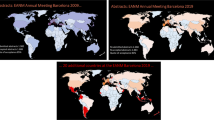Abstract
From the time when Rōentgen and other physicists made the discoveries which led to the development of radiology, radiotherapy and nuclear medicine, medical physicists have played a pivotal role in the development of new technologies that have revolutionized the way medicine is practiced today. Medical physicists have been transforming scientific advances in the research laboratories to improving the quality of life for patients; indeed innovations such as computed tomography, positron emission tomography and linear accelerators which collectively have improved the medical outcomes for millions of people. In order for radiation-delivery techniques to improve in targeting accuracy, optimal dose distribution and clinical outcome, convergence of imaging and therapy is the key. It is timely for these two specialties to work closer again. This can be achieved by means of cross-disciplinary research, common conferences and workshops, and collaboration in education and training for all. The current emphasis is on enhancing the specific skill development and competency of a medical physicist at the expense of their future roles and opportunities. This emphasis is largely driven by financial and political pressures for optimizing limited resources in health care. This has raised serious concern on the ability of the next generation of medical physicists to respond to new technologies. In addition in the background loom changes of tsunami proportion. The clearly defined boundaries between the different disciplines in medicine are increasingly blurred and those between diagnosis, therapy and management are also following suit. The use of radioactive particles to treat tumours using catheters, high-intensity focused ultrasound, electromagnetic wave ablation and photodynamic therapy are just some areas challenging the old paradigm. The uncertainty and turf battles will only explode further and medical physicists will not be spared. How would medical physicists fit into this changing scenario? We are in the midst of molecular revolution. Are we prepared to explore the newer technologies such as nanotechnology, drug discovery, pre-clinical imaging, optical imaging and biomedical informatics? How are our curricula adapting to the changing needs? We should remember the late Professor John Cameron who advocated imagination and creativity — these important attributes will make us still relevant in 2020 and beyond. To me the future is clear: “To achieve more, we should imagine together.”
Similar content being viewed by others
References
Cameron, J.R. and Sorenson, J.S.,Measurement of bone mineral in vivo: An improved method. Science, 142:230–232, 1963.
Reginster, J.Y., Sarlet, N. and Lecart, M.P.,Fractures in osteoporosis: the challenge for the new millennium. Osteoporosis Int; 16, Supplement 01, S1-S3, 2005.
American Association of Physicists in Medicine http://www.aapm.org/medical_physicist/fields.asp
Coleman, C.N.,Linking radiation oncology and imaging through molecular biology (or now that therapy and diagnosis have separated, it’s time to get together again!), Radiology, 228(1):29–35, 2003.
Hiring Initiative at the University of Wisconsin-Madison http://www.clusters.wisc.edu/
Biomedical Sciences Cluster at the University of Chicago http://biomed.uchicago.edu/common/
University of Manchester, Physics and computing in medicine and biology http://www.medicine.manchester.ac.uk/ postgraduate/taught/pcmb/
University of Surrey, Medical physics http://www.ph.surrey.ac.uk/msc/medical/content/module1
Hendee, W.R. and Mower, H.W.,A time of opportunity in the education of medical physicists: Report of a multiorganizational summit on the education of medical physicists, Medical Physics, 33:3327–3332, 2006.
Bioengineering and Imaging Research Opportunities Workshop (BIROW 5) http://www.birow.org/
Author information
Authors and Affiliations
Corresponding author
Additional information
Dedication To my mentor and friend, the late Professor John Cameron who had inspired me and also taught me great lessons in life.
Rights and permissions
About this article
Cite this article
Ng, K.H. Medical physics in 2020: Will we still be relevant?. Australas. Phys. Eng. Sci. Med. 31, 85–89 (2008). https://doi.org/10.1007/BF03178583
Received:
Accepted:
Issue Date:
DOI: https://doi.org/10.1007/BF03178583




